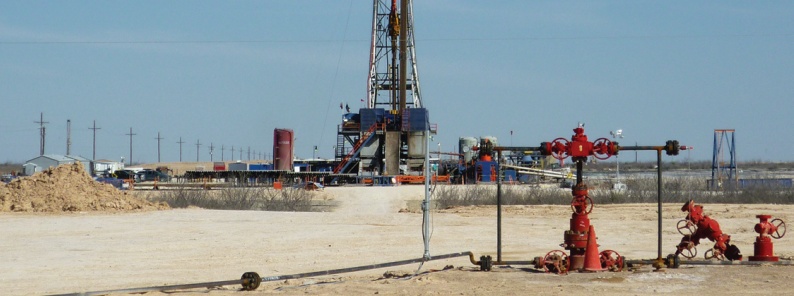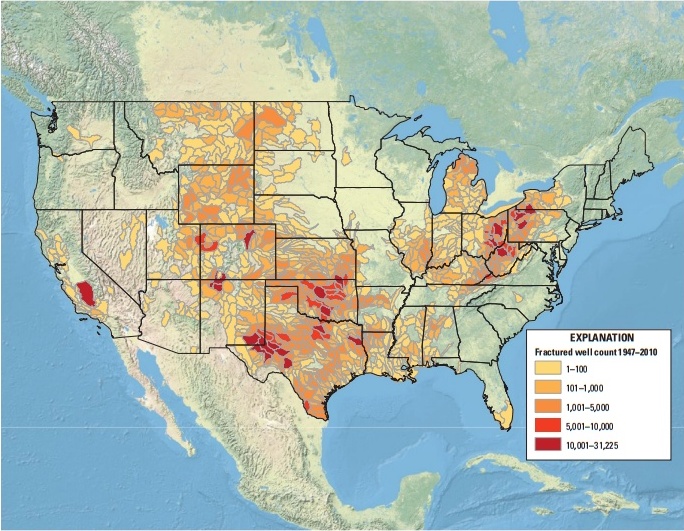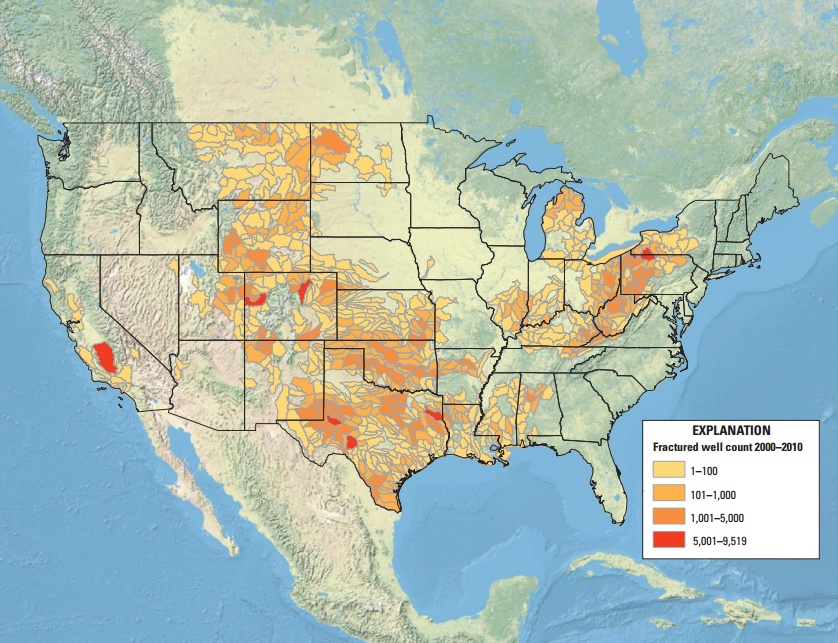Historical hydraulic fracturing trends and data unveiled in new USGS publications

Two new U.S. Geological Survey publications that highlight historical hydraulic fracturing trends and data from 1947 to 2010 are now available.
Hydraulic fracturing is presently the primary stimulation technique for oil and gas production in unconventional resource reservoirs. Comprehensive, published, and publicly available information regarding the extent, location, and character of hydraulic fracturing in the United States is scarce.
“These national-scale data and analyses will provide a basis for making comparisons of current-day hydraulic fracturing to historical applications,” said USGS scientist and lead author Tanya Gallegos.
“We now have an improved understanding of where the practice is occurring and how hydraulic fracturing characteristics have changed over time.”

Distribution of nearly 986,600 hydraulically fractured wells drilled in the contiguous United States from 1947 through 2010, by U.S. Geological Survey hydrologic unit. Offshore and Alaskan wells are not shown.
This national analysis of data on nearly 1 million hydraulically fractured wells and 1.8 million fracturing treatment records from 1947 through 2010 is used to identify hydraulic fracturing trends in drilling methods and use of proppants (sand or similar material suspended in water or other fluid to keep fissures open), treatment fluids, additives, and water in the United States.
These trends are compared to peer-reviewed literature in an effort to establish a common understanding of the differences in hydraulic fracturing and provide a context for understanding the costs and benefits of increased oil and gas production. The publications also examine how newer technology has affected the amount of water needed for the process and where hydraulic fracturing has occurred at different points in time. Although hydraulic fracturing is in widespread use across the United States in most major oil and gas basins for the development of unconventional oil and gas resources, historically, Texas had the highest number of records of hydraulic fracturing treatments and associated wells documented in the datasets.
These datasets also illustrate the rapid expansion of water-intensive horizontal/directional drilling that has increased from 6 percent of new hydraulically fractured wells drilled in the United States in 2000 to 42 percent of new wells drilled in 2010.

Distribution of about 278,00 hydraulically fractured wells drilled in the contiguous United States from 2000 through 2010, by U.S. Geological Survey hydrologic unit. Offshore and Alaskan wells are not shown.
Increased horizontal drilling also coincided with the emergence of water-based “slick water” fracturing fluids.
This is one example of how the most current hydraulic fracturing materials and methods are notably different from those used in previous decades and have contributed to the development of previously inaccessible unconventional oil and gas production target areas, namely in shale and tight-sand reservoirs.
- The USGS report Scientific Investigation Report is available along with the companion Data Series online.
Source: USGS
Featured image courtesy of Mark Engle, U.S. Geological Survey

Commenting rules and guidelines
We value the thoughts and opinions of our readers and welcome healthy discussions on our website. In order to maintain a respectful and positive community, we ask that all commenters follow these rules:
We reserve the right to remove any comments that violate these rules. By commenting on our website, you agree to abide by these guidelines. Thank you for helping to create a positive and welcoming environment for all.